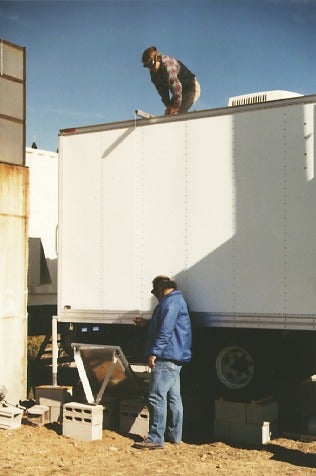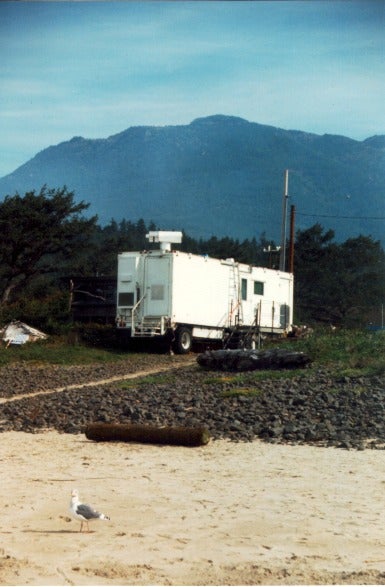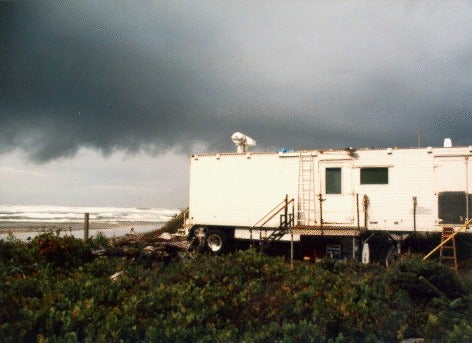COPE95
Coastal Ocean Probing Experiment, 1995
The Coastal Ocean Probing Experiment (COPE) was a follow-on experiment to SCOPE. It was held in September/October, 1995 along the northern Oregon coast and also involved the NOAA/D radar but with the addition of the NOAA/K radar. These radars were operated from an elevated site 744 m above the ocean and just 4 km from the shore. A much more comprehensive array of atmospheric and oceanographic instruments were operated from FLIP and from the R/V Snow Goose as well as from a blimp. Northern Oregon was selected because of the high terrain near the coast giving an excellent view of tidally-forced internal waves (IW) propagating shoreward from a source region near the continental shelf.
Objectives:
- Determine the ability of active and passive microwave sensors to monitor naturally-occurring internal waves for a variety of atmospheric conditions
- Extend the ability of microwave remote sensors to determine parameters of the air/sea interface
- Provide new data sets to hydrodynamicists and scattering theorists for further advancements of theories recently developed at ETL.
Preliminary results show that semi-diurnal IWs were routinely observed by both radars at low grazing angles and that their structure varied dramatically with the lunar cycle. Strong tidal forces occurring during times of the full or new moon had the appearance of forcing by a line source and weak forcing (quarter moon) invariably showed wave patterns suggestive of point source forcing.
Collaborators with ETL on this project having instrumentation on FLIP, the R/V Snow Goose, and on moorings were from the University of Washington Applied Physics Laboratory, the Naval Post Graduate School, Woods Hole Oceanographic Institute, the Johns Hopkins University Applied Physics Laboratory, the University of Washington, and the Canadian Institute for Oceanographic Sciences.


